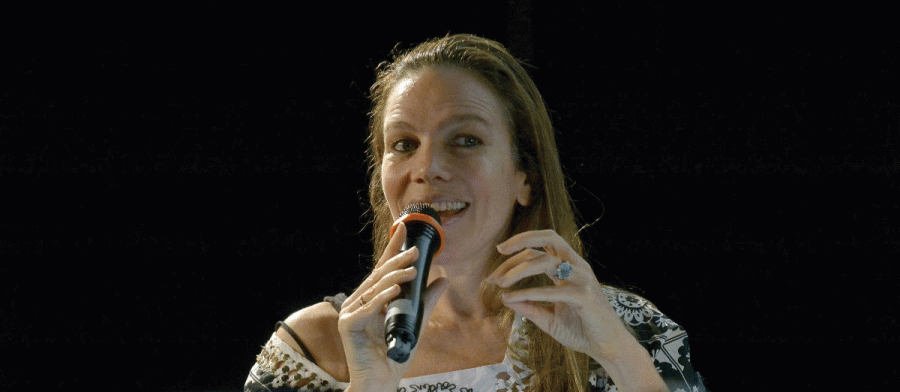Sandra Kogut Exposes Truth Through Artwork
Filmmaker Sandra Kogut spoke about the personal experiences that lead her to the field of documentary filmmaking. Her unique films give a different perspective on reality by pushing through the fake personas people often put on for cameras.
Filmmaker-in-residence Sandra Kogut spoke about her quirky documentaries, including “Parabolic People,” “Passengers of Orsay,” “Adiv Monde” and “Mutum,” at her Art & Art History Lecture Friday October 21 in Golden Auditorium. Kogut shared that she got into filmmaking by accidentally discovering video in the mid-’80s. She then carried the audience through the progression of her career.
Kogut got involved with film while she was still living in Brazil. She wanted to create something that helped reverse the concept of catching people off guard, showing how intelligent or insightful they could be. Kogut was not deterred by the uncertainty of pursuing a solution to this specific problem. She created booths that filmed people and booths for viewing. Anyone who happened upon her projects had the opportunity to express themselves on camera the way that they wanted to, or depending on the booth, see other individuals captured in a positive moment.
Before the project “Parabolic People” was released, Kogut edited the film intensely, condensing many of her recordings so that the different languages spoken throughout the film would not inhibit the experience. The point of the film became clearer; people, regardless of where they come from, could be understood. This contextualized authenticity gave weight to the remarks that followed on the progression of melding fiction and
biography in her later work.
“I really liked that [Kogut] brought up the idea of fiction and nonfiction and the way her films are documentaries, but staged in a sense, so she gets this moment of complete truth even though she created it,” senior Bennie Guzman said.
Although Kogut’s booths are an example of a staged reality, she created specific moments for filming in her later works like “Passengers of Orsay,” where she asked guests at the Musée d’Orsay to show her their favorite painting or artwork. By creating a reason for filming, Kogut was able to inadvertently see people wandering around the museum and their reactions to the artwork.
“Kogut talked about how she tried to interview people who seemed fake … People who get filmed put on a persona of what they think the filmmaker wants to see, but I liked that she would try to go around that and see people for who they actually are,” senior Angelica Trazo said.
Kogut come across this problem when filming people in their everyday lives. A problem or made-up plotline brings out a childlike desire to pretend for that situation. Ironically, the desire to become a different person allows for true traits to become evident in the “actor.” Kogut specifically did this in her film “Adiv Monde” where she made up a legend and told the villagers in her film about it, so that they would have something outside of themselves to discuss.
At the end of the talk, audience members were left with a better sense of who Kogut is and how that shaped her impact in filmmaking. Her personal stories and experiences created a more guided way of seeing her work.
“I think this was a really cool opportunity for students to have on campus, to be able to meet someone who is known globally for their work and hear them talk personally about those things,” senior Kris Pfister said.







